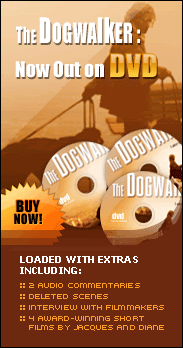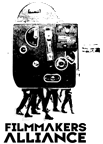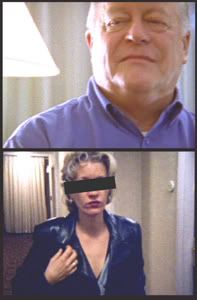It may come as no surprise to some of you, but I'm not always a "good" guy. Certainly, I don't always do "good" things. In fact, I have indeed done some very "bad" things in my lifetime. I like to believe that they are almost always the product of unconscious action or stem out of some excusable lack of awareness. But that isn't always true. When consciously done, however, these "bad" acts often arise out of poor judgement fueled by a kind of self-delusion for which I managed to create some very questionable rationalization.
But does that make me a "bad" guy or a "good" guy? It seems this question is mostly predicated by three factors: the ratio of "good" behavior to bad "behavior", the level of chronic, intentional malice and the outward impact of the "bad" behavior. Someone who parks in handicapped parking spaces (I've NEVER done that, by the way) is not generally considered on par with someone who sells crystal meth to elementary school kids (I hope I don't have to say I've never done this, either, but I'm saying it, anyway). However, both are aggressive acts of self-interest for which other people suffer, but for which the perpetrators have very clear reasons in their own minds for choosing to do. This is why I put "good" and "bad" in quotations. These are subjective and sometimes unclear labels that we put on behaviors/people that are either socially (or personally) acceptable/celebrated or behaviors/people we frown upon or even abhor. However, to lay blanket labels of "good" and "bad" on people/behaviors is to ignore the complexity of thought and/or action - and intricacy of character - that leads to these impactful behavioral choices. People can have extremely complicated motives for doing either "good" or "bad" behaviors, and those behaviors can sometimes be incredibly contradictory to everything else we may know about them. Cinematically, to create characters that are unrelentingly "good" or "bad" is just plain uninteresting filmmaking.
Rarely do I respond to "good" and "bad" characters in a film. There are certainly protagonists and antagonists - the lead character and the character that most impedes the protagonist's goals/needs - in the films I enjoy, but the protagonist is rarely all "good" and the antagonist is rarely all "bad". Sometimes, they are almost completely inverted. At the very least, the protagonist = "good" and antagonist = "bad" paradigm is often subverted in some compelling way. And the word "compelling" is the key. I believe we don't much care whether our protagonist is good, bad or somewhere in between. As long as he/she/it is COMPELLING. Meaning we, as an audience, actually give two sh**s about the character (and what happens to them) throughout the journey contained within the film. So, the question is, what defines "compelling"? What makes a character "compelling"?

Well, obviously, what's compelling for one person may be disgusting or boring or, in some other way, off-putting for another person. So, I'll just share with you 5 key traits for what I consider necessary in creating a compelling character.
1. Accessible Humanity. Do we see something in the character that we can relate to as regular ol' human beings? It doesn't have to express the heights of humanity, just the fact of it. A super-villian with Irritable Bowel Syndrome is much more compelling than one who never has to use the restroom (as is the case with most movie characters). Conversely, a flawless superhero is incredibly hard to relate to if he doesn't have something in him with which we can relate as regular peeps. Christopher Reeve's "Superman" was an endearing innocent who's conflict between always saving the day and falling in love was something we could all relate to. But to step away from comic book heroes, you can look at Tarkovsky's three protagonist's in "Stalker". "Stalker" is a "dense, complex, often-contradictory, and endlessly pliable allegory" that is anchored by the trio's all-too-human frailties and desires even as their names are as opaque as Writer, Professor and Stalker.
2. Believable Contradiction. Although you could potentially bundle this into the above, it is such a key trait of humaness, that I feel it deserves a point all of its own. Without exception, the most compelling characters in cinema are not merely battling external forces bent on stopping them from achieving their goals, they are, more importantly, struggling with internal forces at odds with whatever it is they are compelled to do. And this struggle creates contradiction in thought and/or action. However, an animal torturer with a soft spot for kittens may be cute and surprising, but it simply is not believable. Same can be said of a die-hard animal lover who likes to torture kittens. Creating a contradiction simply for shock value or just for the sake of contradiction will ring false even if people don't understand why it feels phony. And the more distasteful the contradiction, the more off-put the audience will be by the phoniness of it. The contradiction must arise out of an honest understanding of how that character's overriding goals might conflict with their moment-to-moment actions/beliefs/compulsions.
3. Deep Conviction/Quality Rationalization. Contradictions aside, the character must always be driven by profound conviction or compulsion or commitment or whatever you want to call it. Basically, they are doing what they do come hell or high water....IN SPITE of the contradictions that exist within them. We are invested in characters only as much or as little as they are invested in themselves, their choices or their actions (or inactions). And, the more they are choosing to do something we cannot relate to, the better their rationalizations (spoken or unspoken) should be for doing it. So much so that, even when we can't fully empathize with them, we understand to some degree why they are choosing (or driven) to do what they do.
4. Risk Attraction. "No risk, no reward". A compelling character operates from this credo under nearly all circumstances. Even if you are creating a compelling character whose defining trait is an aversion to risk, there should be some serious risk in avoiding risk. I've heard some screenwriting gurus talk about the importance of "raising the stakes" and, while I don't always subscribe to the formulas these gurus espouse, I do believe there has to be something meaningful at stake for the character at nearly all moments - whether they are, in essence, protagonists or antagonists. And that means they must always move toward the greater risk.
5. Stylish Execution. Whatever it is the character chooses to do, they do it in a unique, surprising, stunning, funny, deeply perverse or otherwise must-watch kinda way. It's not just what a character does that defines them, but how they do it. Whether they are rescuing someone or destroying something...or just trying to get through the day, there is something about the way they do what they do that is beyond the routine or expected.
These are my 5 main key traits for creating a compelling character, although I'm sure there are many more considerations and sub-considerations. And I'm sure many of you can add to or expound upon this short list. But hopefully, this gives you something to think about as you draw your own cinematic villains, heroes and everyday schmoes. Perhaps it even gives you a little something to think about in your own character, as well.....




























